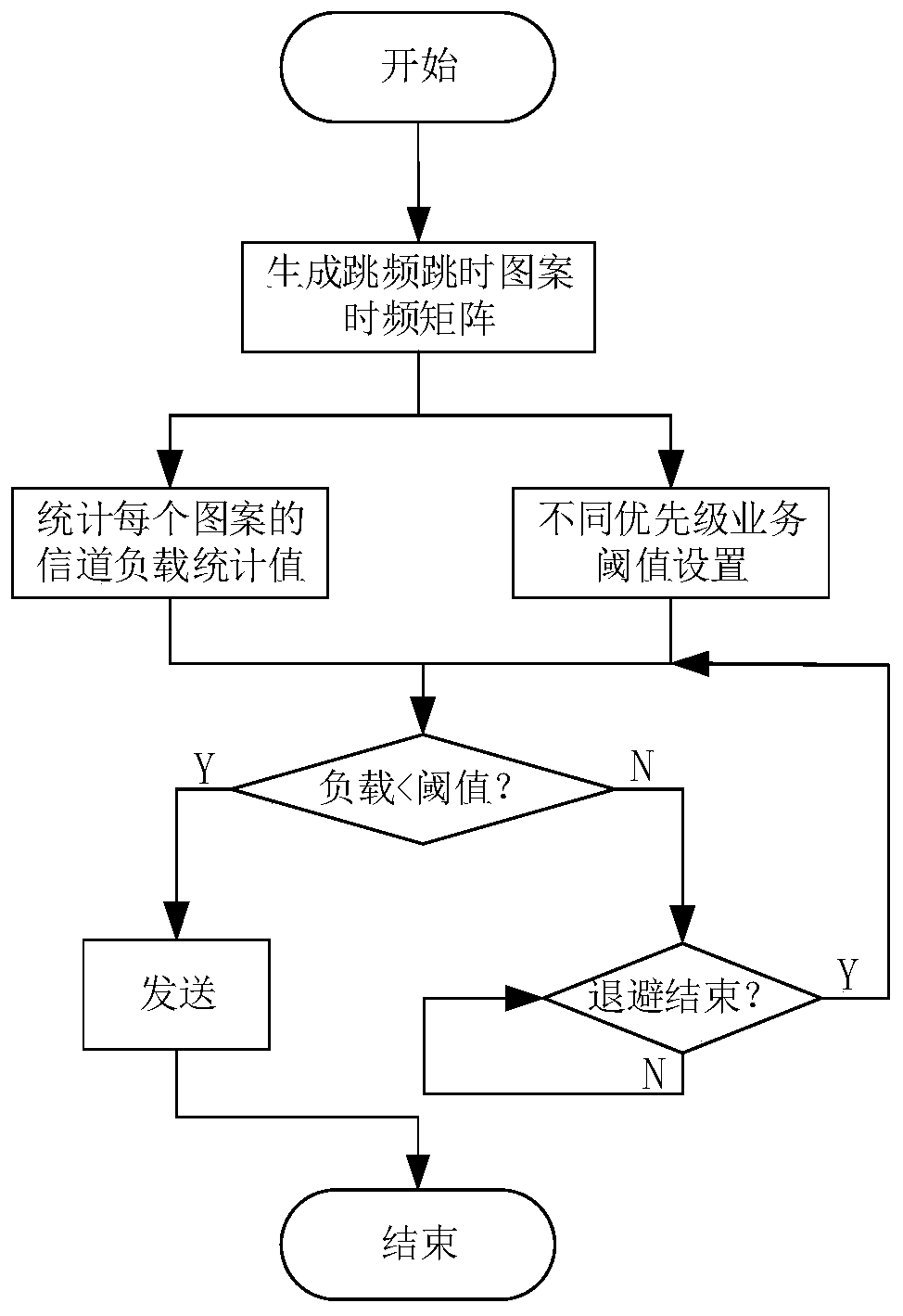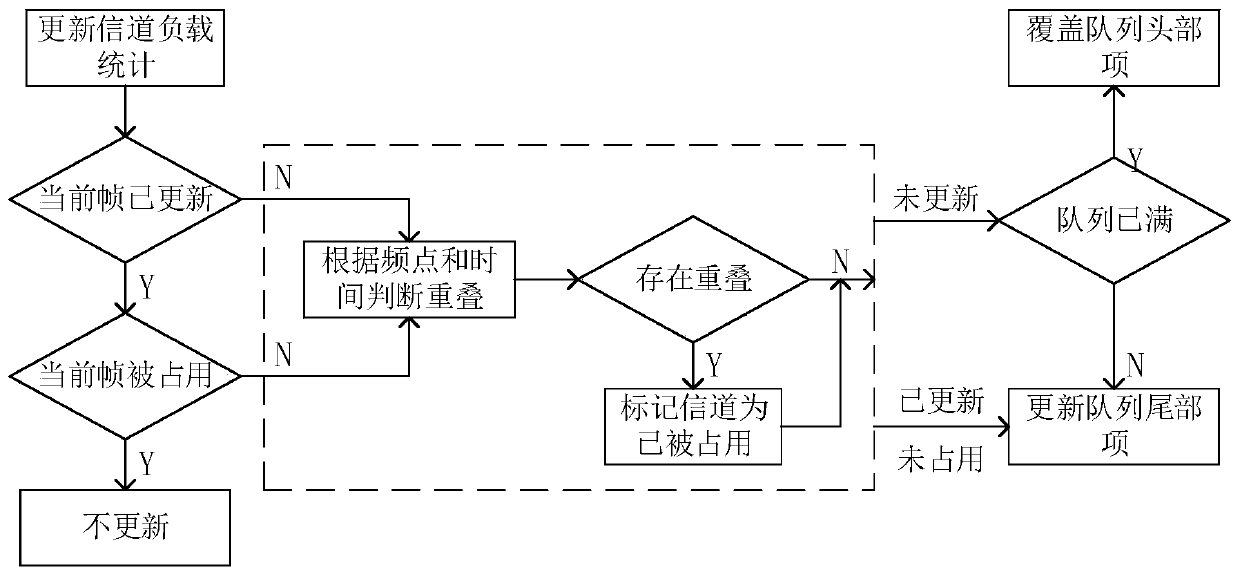Channel state judgment method based on frequency hopping and time hopping pattern under self-organizing network
A self-organizing network, time-hopping pattern technology, applied in network topology, network traffic/resource management, wireless communication, etc. The effect of both performance
- Summary
- Abstract
- Description
- Claims
- Application Information
AI Technical Summary
Problems solved by technology
Method used
Image
Examples
specific Embodiment approach 1
[0056] Specific implementation mode one: combine figure 1 To describe this embodiment,
[0057] This embodiment is a channel state judgment method based on frequency hopping and time hopping patterns in an ad hoc network, including the following steps:
[0058] The fully connected self-organizing network includes N nodes, N nodes are randomly distributed and have equal status, and each node generates k priority services in proportion;
[0059] For fully connected ad hoc networks, the physical layer uses frequency hopping and time hopping technology for transmission, providing a total of m frequency points; based on non-overlapping frequency hopping and time hopping patterns, q patterns are fixedly assigned to each node in advance, and the transmission and timing of nodes Receiving is based on the pattern, which can realize multiple receiving for one send;
[0060] Each pattern corresponds to a time-frequency matrix, and the split physical pulse is mapped to the time-frequenc...
specific Embodiment approach 2
[0064] This embodiment is a channel state judgment method based on frequency-hopping and time-hopping patterns under an ad hoc network, and the process of mapping the split physical pulses to a time-frequency matrix includes the following steps:
[0065] For a data packet, the time required for complete transmission is T p , split it into n durations of t p The physical pulse, then the sending duty cycle is When sending, the node corresponds n physical pulses to the time-frequency matrix one by one, and performs double hopping of frequency and time to enhance the anti-interference performance of the system, reduce the collision probability and delay, and improve throughput.
[0066] The generation process of the time-frequency matrix is as follows:
[0067] Assuming that the number of frequency points m is large enough, based on the construction method of the truncated prime frequency hopping sequence, taking n+1≤p≤m+1, sufficient non-overlapping frequency-hopping and tim...
specific Embodiment approach 3
[0075] Specific implementation mode three: combination figure 2 To describe this embodiment,
[0076] This embodiment is a channel state judgment method based on frequency hopping and time hopping patterns in an ad hoc network. The specific process of channel load statistics is as follows:
[0077] Reasonably design the parameters to generate enough total number of frequency-hopping and time-hopping patterns to ensure that each node is allocated to mutually orthogonal q patterns. Since pulses are sent in patterns, the load statistics are also in units of patterns. The existing channel load statistics methods are generally divided into two types, one is to count the number of data packets arriving at the upper layer or broadcast information through the network layer, and the other is to perform statistics on each frequency point at the physical layer and obtain the average value as the final result. Statistics. However, in the case of frequency-hopping and time-hopping patt...
PUM
 Login to View More
Login to View More Abstract
Description
Claims
Application Information
 Login to View More
Login to View More - R&D
- Intellectual Property
- Life Sciences
- Materials
- Tech Scout
- Unparalleled Data Quality
- Higher Quality Content
- 60% Fewer Hallucinations
Browse by: Latest US Patents, China's latest patents, Technical Efficacy Thesaurus, Application Domain, Technology Topic, Popular Technical Reports.
© 2025 PatSnap. All rights reserved.Legal|Privacy policy|Modern Slavery Act Transparency Statement|Sitemap|About US| Contact US: help@patsnap.com



